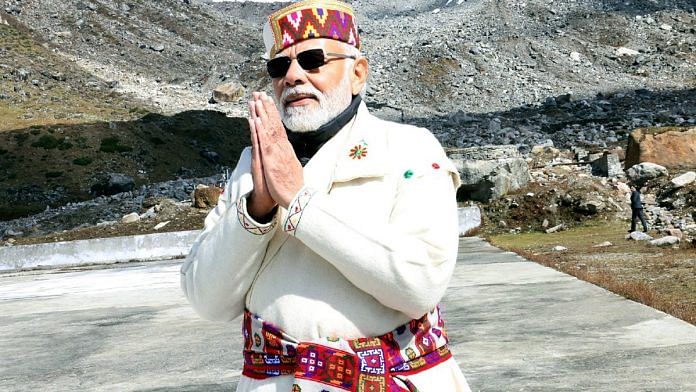New Delhi: Prime Minister Narendra Modi’s sartorial choices have been key to his political messaging wherever he goes and his two-day trip to Uttarakhand this week was no exception. During his appearances at Char Dham shrines and a public meeting Friday, Modi was photographed donning four different outfits over a span of roughly eight hours.
With his choice of clothes, the Prime Minister seemed to be conveying his respect for the traditions and culture of Himachal Pradesh — which is headed to polls on 12 November — and Gujarat, where elections are to be held sometime later this year.
That he dresses to message reinforces how symbolism runs deep vis-à-vis Modi’s support base. Whether he is celebrating Diwali with Army jawans or releasing cheetahs into Kuno National Park, Modi’s outfit is suited for the occasion and amplifies his message to supporters and detractors alike.
“Modi is the only politician in recent times who knows the symbolism of dress and cultural symbols when addressing a political constituency. He uses such symbolism to reach out to people and invoke a sense of emotion, local pride and nationalism,” said Harish Thakur, a professor of political science at Himachal Pradesh University.
He recalled how the Prime Minister wore the Uttarakhandi topi during his Republic Day address this year, barely months before polls in Uttarakhand. “It was to strike a chord with the people and every Bharatiya Janata Party (BJP) leader in Uttarakhand used that cap during the polls,” said Thakur.
Taking a cue from Modi, Gujarat BJP chief C.R. Paatil had lakhs of such caps made specially for the party’s election campaign in Gujarat, a state BJP leader who did not wish to be named told ThePrint.
“When the PM visits Army posts or Diwali or other occasions, he wears the uniform to identify with the jawans and send a message of nationalism to the voters,” said another central BJP leader.
Also Read: ‘Speed of a cheetah’ — read the subtext. Modi’s ‘pet’ project is heavy with political messaging
Four outfits in one day
When Modi arrived at the Jolly Grant airport in Dehradun Friday morning, he was seen sporting a plain white kurta with a multi-coloured, printed stole.
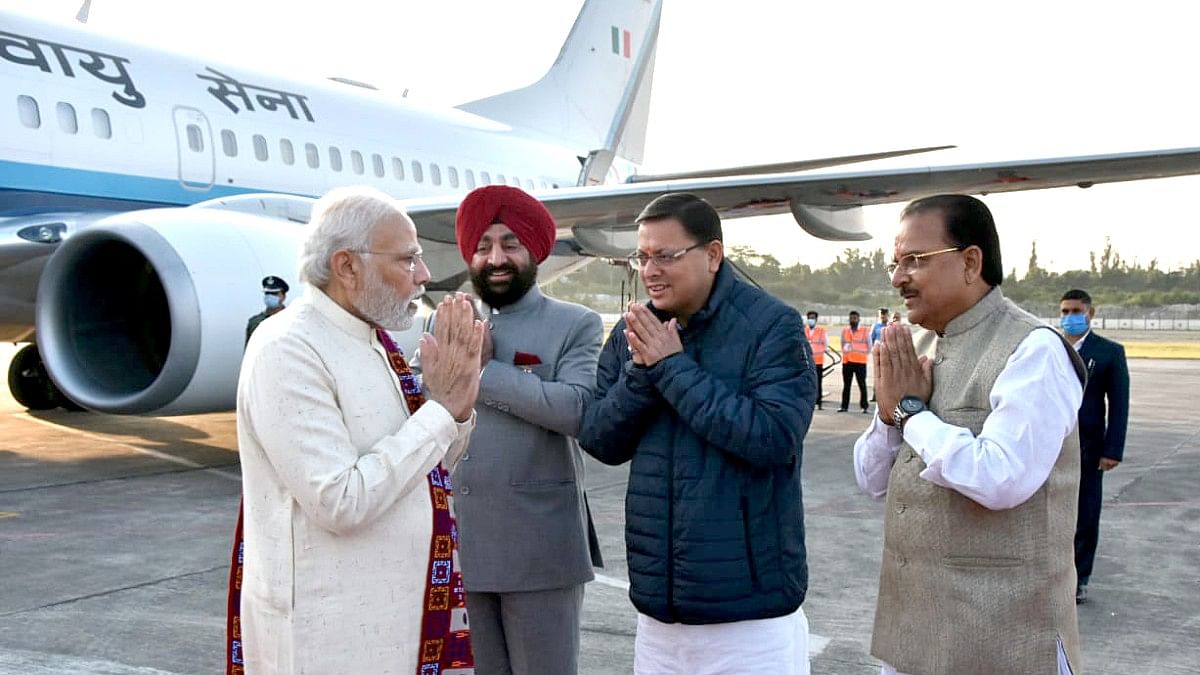
Later on, while offering prayers at Kedarnath shrine, he wore a ‘chola dora’, the traditional outfit of males of Himachal Pradesh’s Gaddi community. Pictures of Modi in a long, white flowy coat (chola), with a woollen belt (dora) and a pahari topi were shared widely. This was Modi’s sixth visit to Kedarnath in the last eight years.
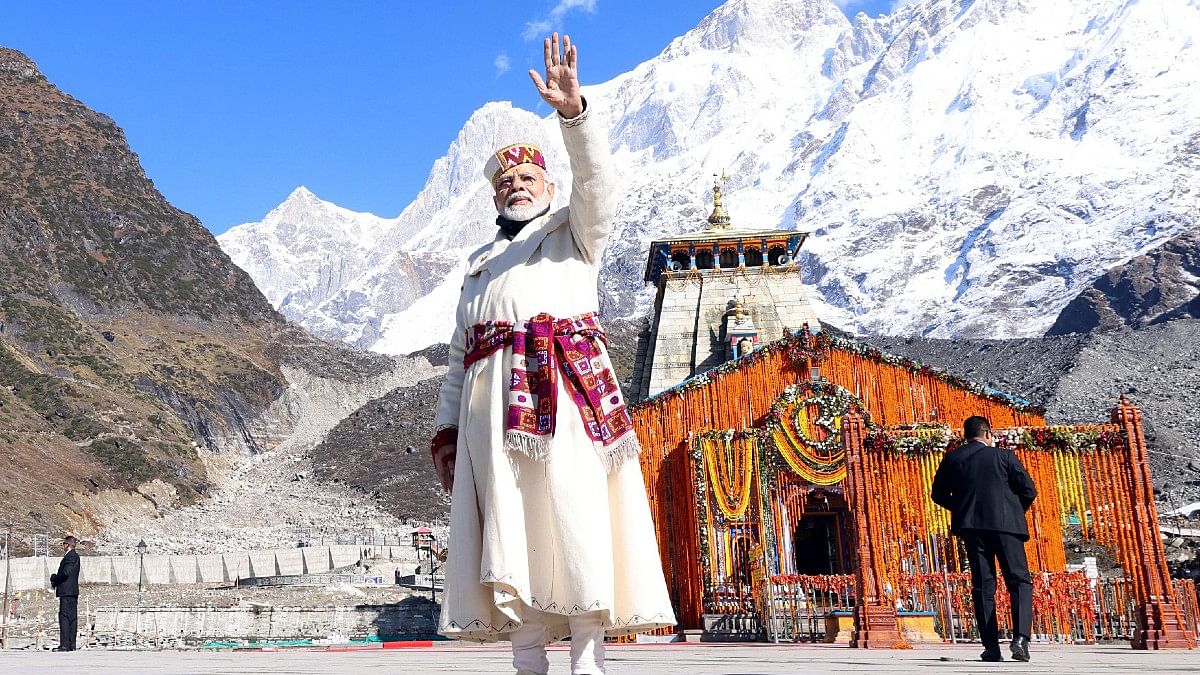
He was then seen wearing a black puffer jacket with a yellow stole while visiting the Badrinath shrine.
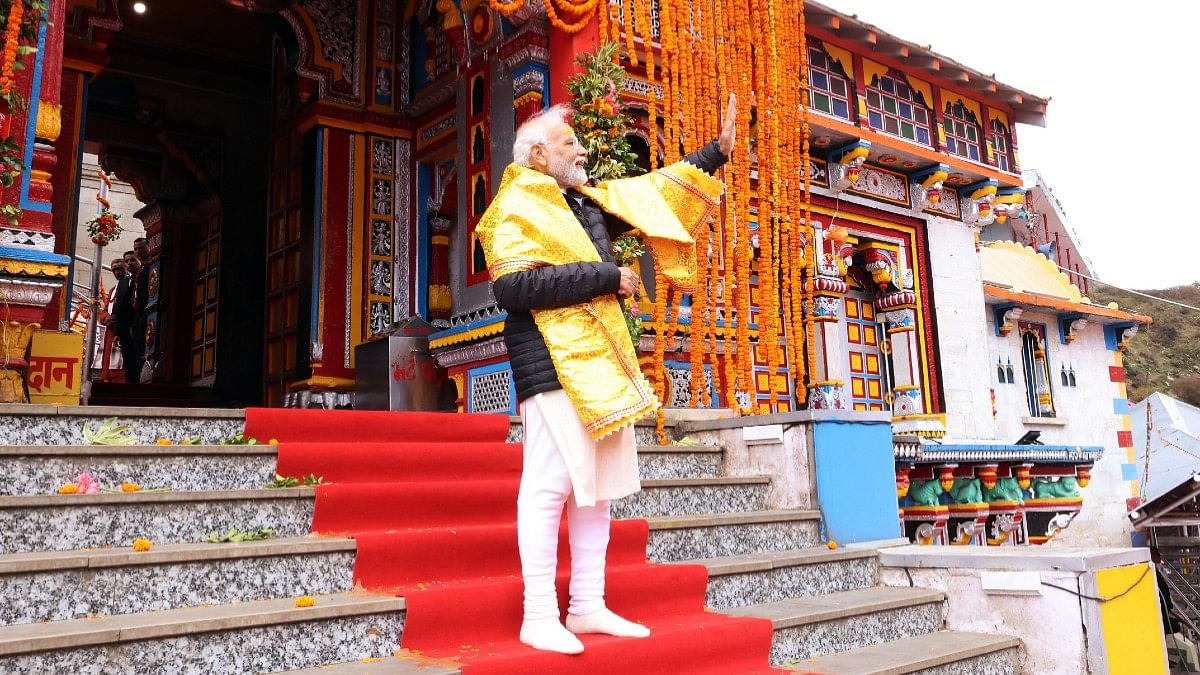
Later, for a public meeting in Mana village, he wore a grey button-down overcoat which he matched with a grey stole and a pair of gloves.
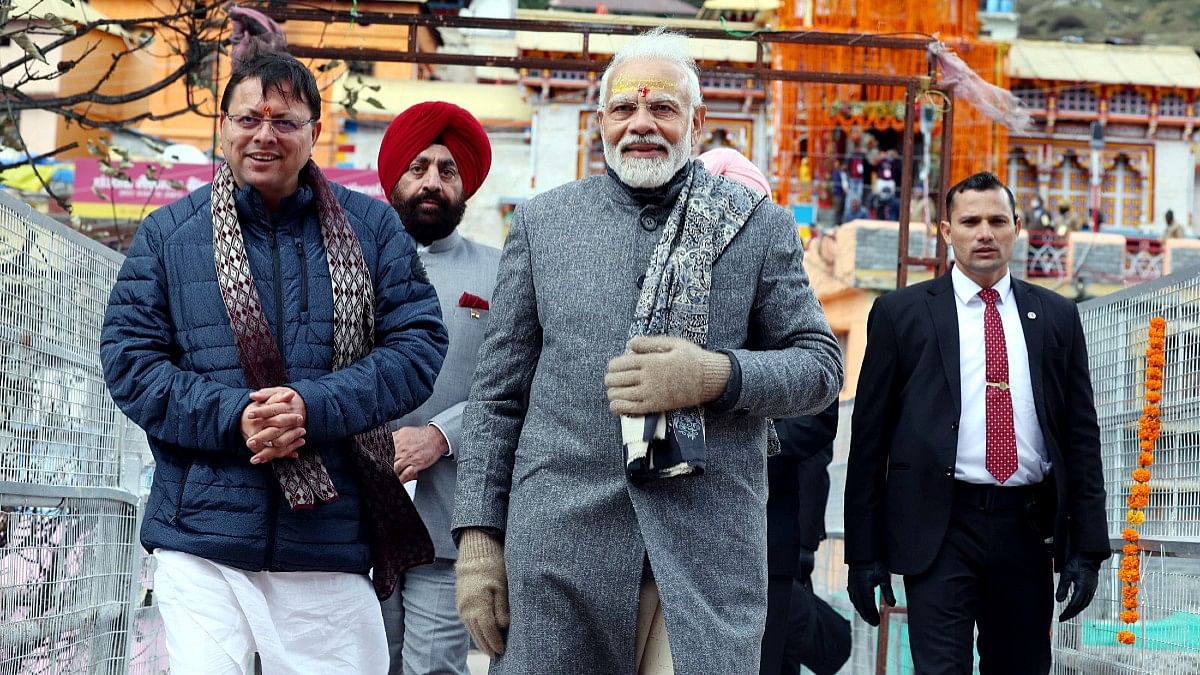
When in Uttarakhand, the PM also inaugurated connectivity projects worth Rs 3,400 crore in Chamoli district and laid the foundation stone of two ropeway projects and road widening projects.
Significance of ‘chola dora’
Modi reportedly received the ‘chola dora’ ensemble as a gift from women of Himachal’s Chamba district. Bharmour in Chamba is known to have a sizable Gaddi population, other than parts of Kangra — which has 15 assembly seats — and Jammu and Kashmir.
The Prime Minister enjoys popularity among women voters who voted for the BJP in large numbers in Gujarat (2017), Himachal Pradesh (2017), Bihar (2020) and Uttarakhand (2022) — all four states where BJP bucked anti-incumbency sentiment. In Himachal, for instance, more women voted for the BJP in the previous assembly elections than men.
The woollen coat he wore to Kedarnath Friday was embroidered with symbols such as the svastika — which signifies prosperity in many cultures — and a peacock feather, often associated with Lord Krishna. The chola is stitched in such a manner so as to allow men of the Gaddi community to carry lambs during migration.
The multi-coloured dora around the waist usually weighs about 2 kg and helps Gaddi men carry a load on their back. And the pahari topi — a favourite of former Himachal Pradesh chief minister late Virbhadra Singh — signalled to people of the hill state the importance BJP attaches to their way of life.
‘Sabka Libas’
Modi’s visit to Badrinath and Kedarnath — among the most revered shrines for Hindus — and his choice of clothes, the weekend before Diwali, is likely a message to the BJP’s Hindu voters, especially in the poll-bound states of Himachal and Gujarat.
According to the 2011 Census, Hindus made up 82.97 per cent of Uttarakhand’s population while this number stood at 88.57 per cent in Gujarat.
The Prime Minister has a “special connection with Himachal”, said Kishan Kapoor, the BJP MP from Kangra. “During Kullu Dussehra, he (PM) wore a Himachali cap and Himachali shawl. He also gifted Himachali artefacts and a shawl to former US president Donald Trump during the latter’s visit to India,” Kapoor told ThePrint.
Kapoor, while pointing out that Modi was BJP’s in charge for Himachal Pradesh over 20 years ago, said the Prime Minister “knows every custom” of the people of Himachal. He further added that Modi has “stressed on improving connectivity between the two hill states” of Uttarakhand and Himachal Pradesh.
Like most elected leaders around the world, Modi wields his choice of clothes as a means to signal his intent to his supporters. His attire — often targeted, situational, and flexible — underscores the idea of ‘sabka saath, sabka vikaas’, and ‘sabka libaas’ (garb).
(Edited by Amrtansh Arora)
Also Read: ‘Moditva’, wooing tribals, scarce mention of CM: What BJP strategy in Gujarat yatra was all about



